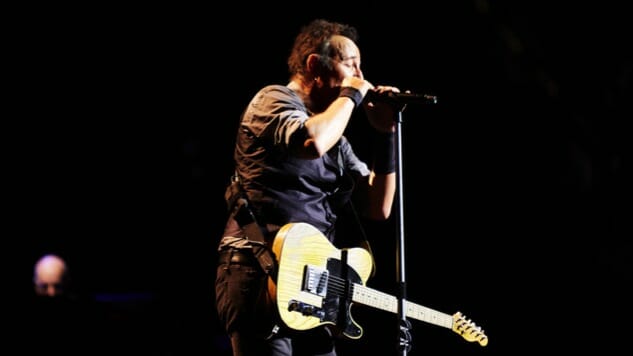Why Bruce Springsteen’s The River Works So Well Live
Concert recap: Bruce Springsteen at Atlanta's Phillips Arena (2/18/16)
Photo by Danny Clinch
You don’t need me to tell you that Bruce Springsteen and the E Street Band are incredible in concert. That’s a universal truth—the sky is blue, the grass is green, The Boss is one of the greatest live performers all time. But when Springsteen announced last year that this tour would feature his 1980 double album The River front to back—something he’d only done once prior, at a 2009 Madison Square Garden show—it raised a few questions. Would the album’s sequencing work in a live setting? Would more casual fans turn out for a record that often gets overshadowed in the Springsteen canon by the likes of Born to Run, Nebraska and Darkness on the Edge of Town?
Yes and yes. The story behind The River goes like this: Springsteen enters his 30s, readies a 10-track followup to Darkness on the Edge of Town for release, and then scraps it, opting instead to flesh it out into a double-LP and incorporate a greater variety of tones. “We were trying to get a record that felt like our live show, that’s why it ended up being a double record,” Springsteen recently told Jimmy Fallon. “We had a lot of bar band music on and a lot of character studies that I would write also. It got close to capturing some of the energy of a live show.”
Because of that, you get some mood swings, like the devastating brooder “Independence Day” sandwiched in between two uptempo romps (“Two Hearts” and “Hungry Heart”), and critics of The River argue it lacks cohesion. But to do so is to ignore the coming-of-age themes that run through its 20 tracks.
“The River is about time,” Springsteen told the crowd at Atlanta’s Phillips Arena on Thursday night. “You get to a certain point in life when you realize you’re running out of time—to make connections with people, to fall in love and get married, to do your work.”
But time doesn’t exist when you’re watching Bruce Springsteen play. It does for his characters, of course, who find themselves struggling to connect with an aging parent, grappling with mortality after witnessing a wreck on the highway or wondering if a dream is “a lie if it don’t come true, or is it something worse.” But it doesn’t exist for Bruce himself, whose three-plus hours onstage will make you believe he could go on forever, or for the “pared-down” nine-piece E Street Band (Steven Van Zandt, Nils Lofgren, Patti Scialfa, Jake Clemons, Max Weinberg, Soozie Tyrell, Garry Tallent, Roy Bittan and Charles Giordano), who sound as strong as ever. And it certainly doesn’t exist for you when you’re screaming along to “Cadillac Ranch” with 20,000 other people.
-

-

-

-

-

-

-

-

-

-

-

-

-

-

-

-

-

-

-

-

-

-

-

-

-

-

-

-

-

-

-

-

-

-

-

-

-

-

-

-








































